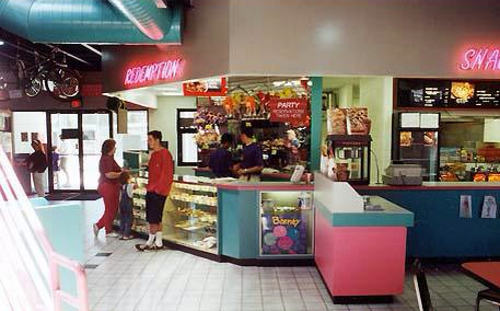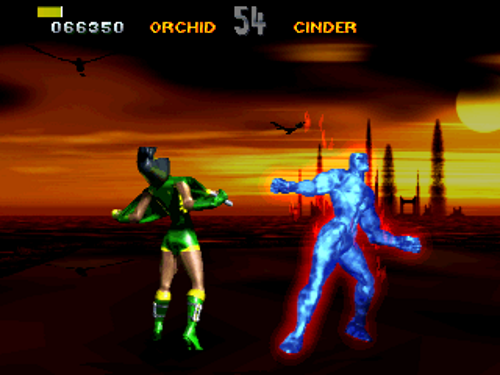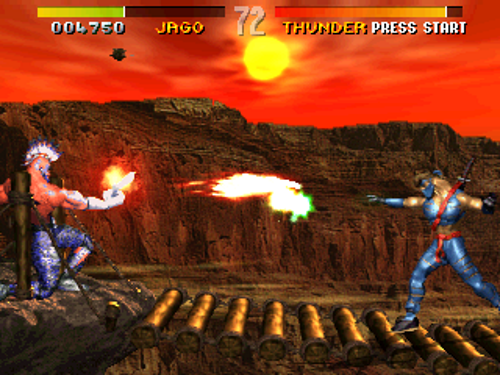A woman knocked on our door one summer evening in 1992. She was circulating a petition against the planned construction of a huge arcade and mini-golf course not far from our neighborhood. As a Concerned Citizen, she felt that it would lower property values and promote delinquency in the delicate suburban environs of Beavercreek, Ohio.
I feel bad for that woman. Not only did my father, a man so cautious he balked at giving his credit card to Blockbuster, decline to put his name on the petition, but her visit guaranteed that arcade one more customer: I couldn’t wait to visit Cap’N Bogey’s Golf & Games.

Cap’n Bogey’s was close enough to our neighborhood to worry overprotective homeowners, and that meant it was within easy walking distance. Every weekend I’d hike there, usually early enough to avoid major crowds, and spend far too much time lost in a maze of arcade cabinets. My sister would tag along, but I’d make her walk a good distance behind me. Because you needed to look as cool as possible when you arrived at Cap’n Bogey’s.
There were many arcades in the Dayton suburbs, but compared to the typical nook in a mall or the back room at a pizza joint, Cap’n Bogey’s wasn’t just an arcade. It was a kingdom. The main building surrounded itself with a golf course, bumper-boats, and batting cages. Inside, the first floor was devoted to a snack bar and redemption games, with everything decorated in white, blue, and occasionally pink. I usually walked past such juvenile distractions and made straight for the upper level and the genuine arcade games.

This was the 1990s, and that put me right in the middle of the fighting-game craze. Street Fighter II had started it in 1991, Mortal Kombat had cemented it in 1992, and within a few years every arcade had a wealth of head-to-head fighters and the coin-op industry was bigger than it had been since the early 1980s.
Cap’n Bogey’s arcade was stocked with every genre, including four sit-down Dayton USA cabinets, two T-Mek machines wired for versus play, the elaborate foot-pedal setup of Time Crisis, and the glorious driving-shooting hybrid of Lucky & Wild. Yet it was the fighting games that drew me. The gaming magazines of the day couldn’t stop hyping up the latest Street Fighter or Darkstalkers or Samurai Shodown or Virtua Fighter, and the first place to see them was the arcade. This was well before consoles were on par with arcade hardware, and unless your parents bought you a $600 Neo Geo home system, the arcade versions were always just a little bit better.
Some of these games would vanish within a month, but the big names stayed and took me through the heights of an arcade renaissance and its whimper of an ending.
KILLER INSTINCT
Is Killer Instinct the best fighting game of the 1990s? Hardly, but I think it’s the best example of a 1990s fighting game. Rare and Nintendo fashioned it with CG-rendered visuals that looked impressive in early 1995 but awkwardly plastic by that September. The game boasted every possible stereotype in its lineup: a Predator-like robot, a mystically powered ninja, a boxer, a velociraptor, a low-detail ice alien, an equally low-detail fire mutant, and, of course, a female character whose signature finishing move involved pulling open her top to give her opponent a heart attack. I'd say that the 1990s were a different time, but in this case I'm not sure that applies.

I actually learned to play fighting games on Killer Instinct. I’d enjoyed Street Fighter II and Mortal Kombat, but I was never particularly good at them, rarely pulling off a special move more complicated than jamming a button really fast. Killer Instinct was approachable enough that I could pull off the special moves and even trigger the extended combo attacks that made the game’s announcer yell BLASTER or AWESOME. And when I went back to playing Street Fighter Alpha or The King of Fighters ’95, I actually understood what was happening.
There’s a better reason I remember Killer Instinct well. One Saturday, local radio station Z-93 set up a contest with a Super NES and the newly released port of Killer Instinct. The previously selected participants didn’t show, so the station held a quick lottery and drew names of five random arcade patrons. I threw my name in and, thanks to the relatively light crowd, I got picked.
The contest wasn’t an actual tournament. Instead of facing each other, the five of us just played solo, using the ninja Jago, to see who could rack up the highest score in a single match. This was clearly planned by someone who still thought that video games were in the score-driven heyday of Pac-Man and Space Invaders, even though an actual fighter like Killer Instinct was all about beating an opponent and showing off an ULTRA combo.

And I won. I managed to perform a bunch of combos and Jago’s finishing move, which put me well ahead of the other participants. I got a nearly new Super NES and made a brief appearance on the radio. To this date it remains the nicest thing I’ve won in a contest, eclipsing the cake I got at a county fair when I was five and even the used DVD of Steel Angel Kurumi Encore that I received in a trivia challenge at Anime Central.
In retrospect, spending all my time in the upper-level arcade of Cap’n Bogey’s wasn’t as practical as visiting the lower-level, where at the very least I could have played skee-ball, earned tickets, and exchanged them for prizes. Yet that day I walked out with a game system and the assurance that, for once, no one could tell me that I’d wasted my time at an arcade.
